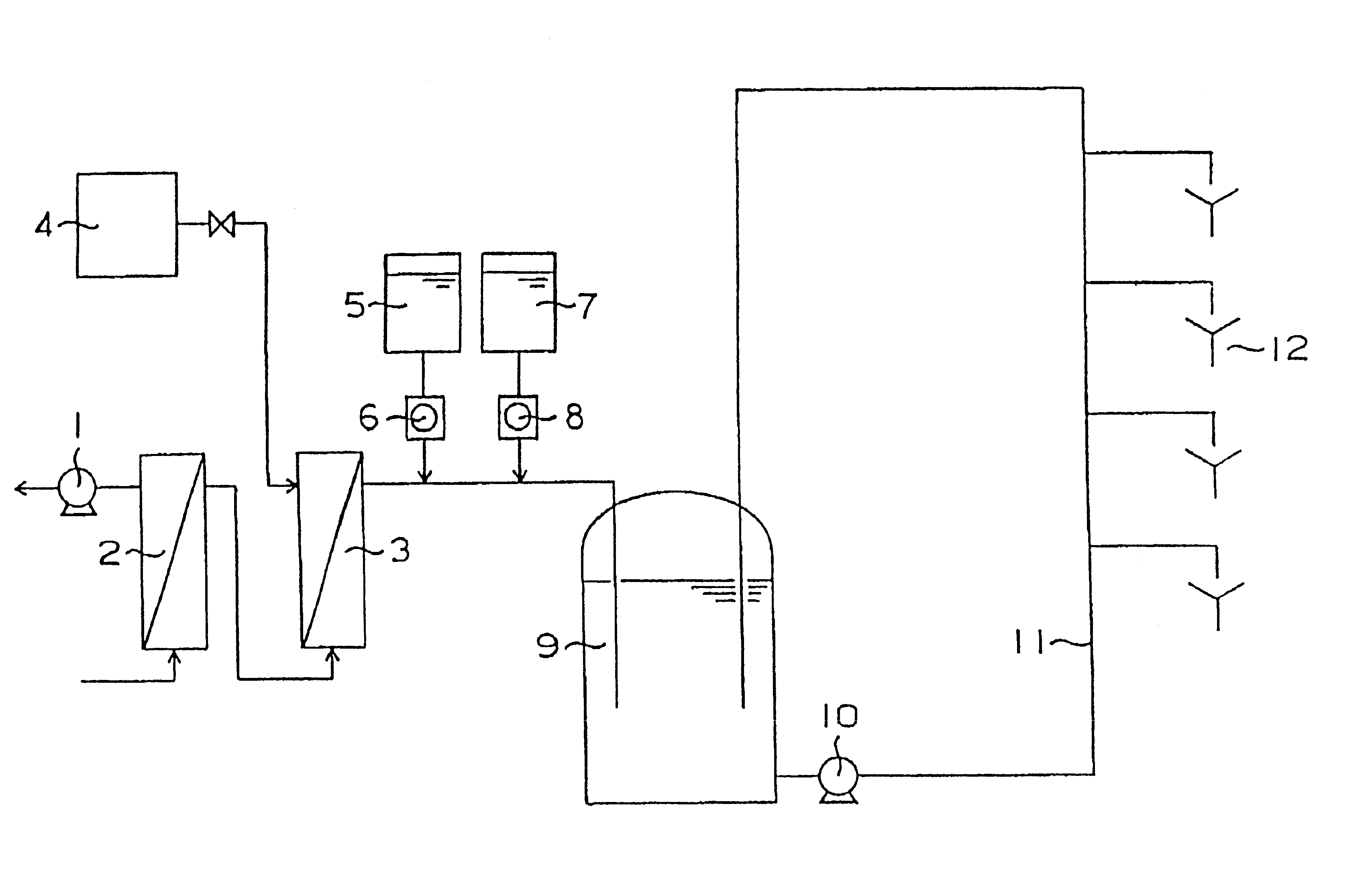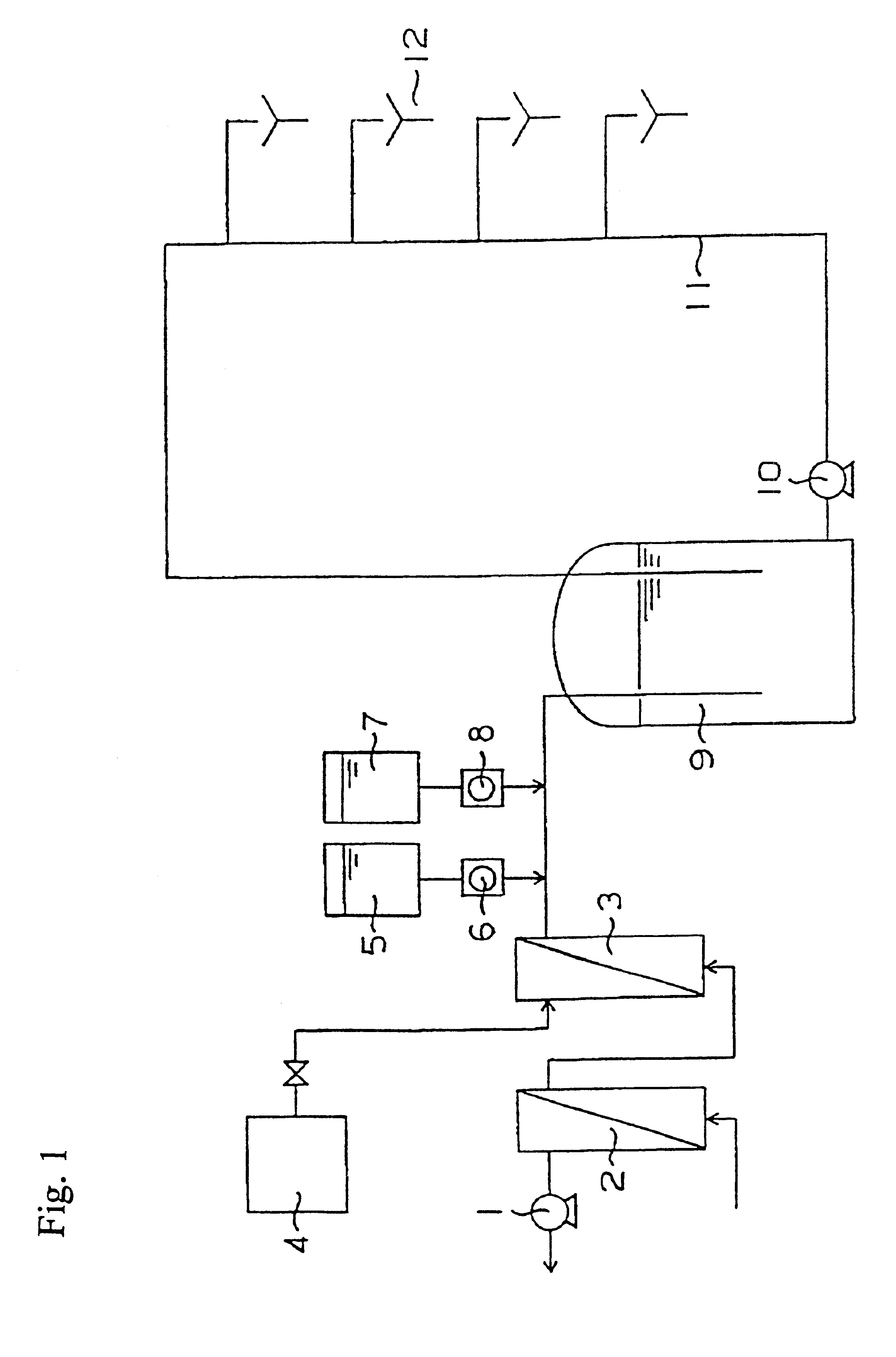Cleaning solution for electronic materials and method for using same
a technology of electronic materials and cleaning solutions, applied in the direction of detergent compounding agents, instruments, inorganic non-surface active detergent compositions, etc., can solve the problems of chemical contamination of steam, excessive waste water processing, and the apm method has several problems, so as to reduce the amount of chemicals used, stable water quality, and water quality for extended periods
- Summary
- Abstract
- Description
- Claims
- Application Information
AI Technical Summary
Benefits of technology
Problems solved by technology
Method used
Image
Examples
embodiment 1
After drying, the number of particles adhered on the wafer surface was measured as in A single wafer had 6,400 particles of diameter 0.2-0.5 micrometer, 16,500 particles of diameter 0.5-1.0 micrometer, and 95 particles of diameter 1.0 micrometer or greater, for a total of 22,995 particles. The removal rate of the particles from the wafer surface was 48%.
embodiment 2
A silicon wafer was prepared and spin cleaned as in Embodiment 1. A cleaning solution, containing 0.1 weight % of sodium hyposulfite, 10 mg / liter of ammonia, and 10 mg / liter of hydrogen peroxide was used.
After drying, the number of particles adhered onto the wafer surface was measured as in Embodiment 1. A single wafer had 120 particles 0.2-0.5 .mu.m in diameter, 310 particles 0.5-1.0 .mu.m in diameter, and 0 particles 1.0 .mu.m or greater in diameter, for a total of 430 particles. The removal rate of the particles on the wafer surface was 99%.
Referring to Table 1, the cleaning solution composition of Embodiments 1-2, Comparative Examples 1-3, cleaning conditions, and the particle removal rates are shown.
As can be seen from the results in Table 1, even though the cleaning solution of the present invention as shown in Embodiments 1 and 2 have 1 / 4000 of the content of ammonia and hydrogen peroxide compared with the APM cleaning solution of the prior art in Comparative Example 2, and d...
PUM
 Login to View More
Login to View More Abstract
Description
Claims
Application Information
 Login to View More
Login to View More - R&D
- Intellectual Property
- Life Sciences
- Materials
- Tech Scout
- Unparalleled Data Quality
- Higher Quality Content
- 60% Fewer Hallucinations
Browse by: Latest US Patents, China's latest patents, Technical Efficacy Thesaurus, Application Domain, Technology Topic, Popular Technical Reports.
© 2025 PatSnap. All rights reserved.Legal|Privacy policy|Modern Slavery Act Transparency Statement|Sitemap|About US| Contact US: help@patsnap.com


